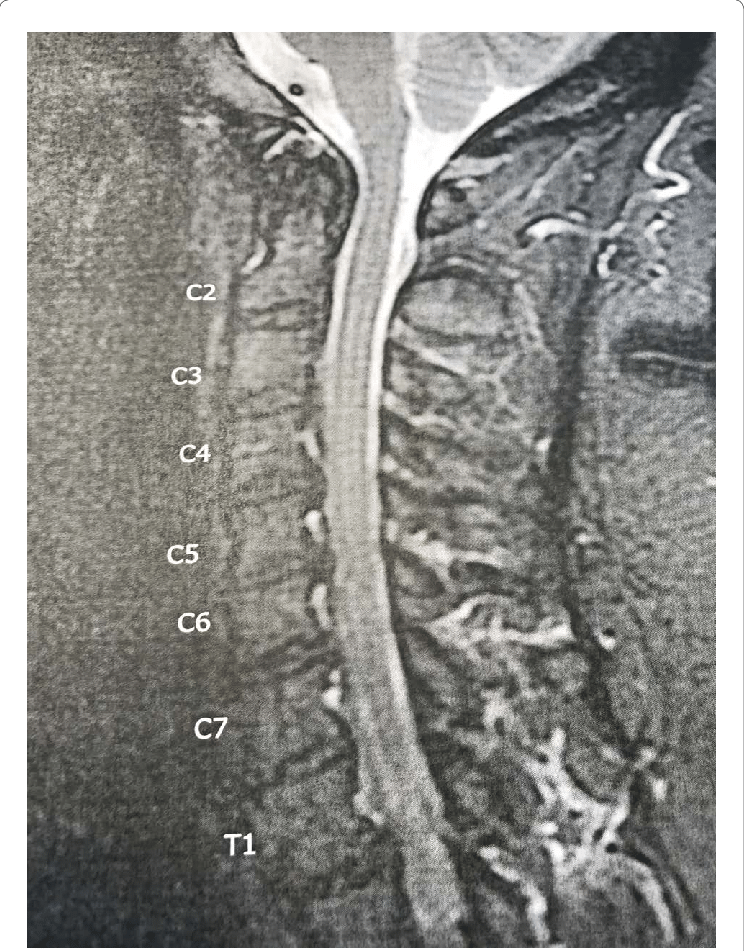
Adelekan Oluwaseun Ojo
Multilevel spondylosis is a degenerative condition that affects multiple levels of the spine, leading to a variety of symptoms and complications
As people age, the wear and tear on their spinal discs and joints can cause changes that lead to spondylosis. When these changes occur at more than one level of the spine, the condition is referred to as multilevel spondylosis.
Causes :
The primary cause of multilevel spondylosis is the natural aging process. Over time, the intervertebral discs that act as cushions between the vertebrae begin to deteriorate. This degeneration can lead to:
1. Disc Herniation: As discs wear down, they can bulge or herniate, pressing on spinal nerves.
2.Bone Spurs: Osteophytes, or bone spurs, can form as the body tries to repair the degenerated areas, potentially leading to nerve compression.
3.Facet Joint Arthritis: The facet joints, which provide stability and facilitate movement in the spine, can develop arthritis, leading to pain and stiffness.
Other factors that can contribute to the development of multilevel spondylosis include:
a. Genetics: A family history of spinal problems can increase the likelihood of developing spondylosis.
b.Occupation: Jobs that involve repetitive bending, heavy lifting, or prolonged periods of sitting can accelerate spinal degeneration.
c.Trauma: Previous spinal injuries can predispose individuals to spondylosis.
d.Obesity: Excess body weight puts additional stress on the spine, hastening degenerative changes.
Symptoms :
The symptoms of multilevel spondylosis can vary depending on the regions of the spine affected and the severity of the degeneration. Common symptoms include:
i Pain: Chronic pain in the neck, mid-back, or lower back is a typical symptom. The pain may radiate to the arms (cervical spondylosis) or legs (lumbar spondylosis).
ii. Stiffness: Reduced flexibility and stiffness in the spine, making it difficult to move or perform daily activities.
iii.Nerve Compression Symptoms: Numbness, tingling, or weakness in the extremities due to nerve compression. In severe cases, this can lead to radiculopathy or myelopathy, which are conditions where the spinal cord or nerve roots are affected.
IV. Decreased Range of Motion: Difficulty bending, twisting, or stretching the spine.
Diagnosis
To diagnose multilevel spondylosis, a healthcare provider will typically start with a thorough medical history and physical examination. Imaging studies are crucial in confirming the diagnosis and determining the extent of spinal degeneration. These may include:
– X-rays: To assess the alignment of the spine and detect bone spurs.
– Magnetic Resonance Imaging (MRI): To provide detailed images of the soft tissues, including discs and nerves.
– Computed Tomography (CT) Scans: To offer a more detailed view of the bony structures.
In some cases, additional tests such as electromyography (EMG) or nerve conduction studies may be performed to evaluate nerve function.
Treatment :
The treatment of multilevel spondylosis aims to alleviate symptoms, improve function, and enhance the quality of life. Treatment options can be broadly categorized into conservative and surgical approaches.
Conservative Treatments:
– Physical Therapy: Exercises and stretches to strengthen the muscles supporting the spine and improve flexibility.
– Medications: Pain relievers, anti-inflammatory drugs, and muscle relaxants to manage pain and inflammation.
– Lifestyle Modifications: Weight management, ergonomic adjustments, and avoiding activities that exacerbate symptoms.
– Injections: Corticosteroid injections or nerve blocks to reduce inflammation and provide temporary pain relief.
Surgical Treatments:
When conservative treatments fail to provide adequate relief, surgical intervention may be considered. Surgical options vary depending on the location and severity of the spondylosis and may include:
– Discectomy: Removal of a herniated disc to relieve nerve compression.
– Laminectomy: Removal of a portion of the vertebra (lamina) to decompress the spinal cord or nerves.
– Spinal Fusion: Joining two or more vertebrae to stabilize the spine and reduce pain from motion.
– Artificial Disc Replacement: Replacing a damaged disc with an artificial one to maintain spinal motion.
Conclusion
Multilevel spondylosis is a complex condition that can significantly impact a person’s quality of life. Early diagnosis and a comprehensive treatment plan tailored to the individual’s needs can help manage symptoms and improve function. By understanding the causes, recognizing the symptoms, and exploring the available treatment options, individuals with multilevel spondylosis can work with their healthcare providers to find effective ways to manage this challenging condition.
…………….Adelekan Oluwaseun Ojo, is a counseling psychologist, and a business & health consultant with Jigsimur Zdex Int’l, a company which is into the production and distribution of Jigsimur herbal health drink, a natural curative and preventive herbal medicine from South Africa.
For personal consultation, you can contact us on 07089225319 or 08035122399





